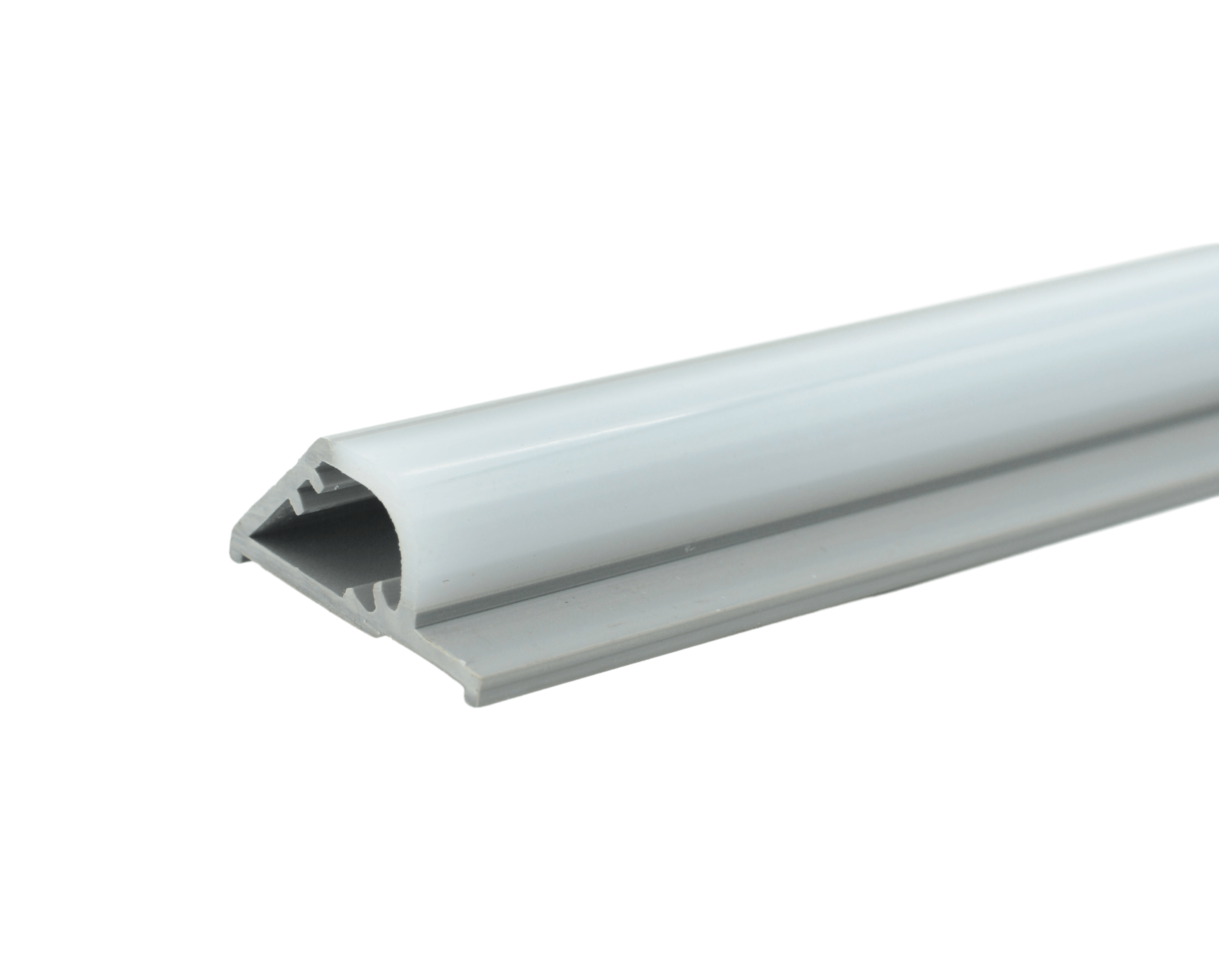
Phone Number :
04 15, 2024
Plastic profiles, particularly those crafted from Polyvinyl Chloride (PVC), have found widespread use across various industries due to their durability, versatility, and cost-effectiveness. Among these, PVC co-extruded triangle profiles stand out for their unique properties and configurations, tailored to meet specific needs in a broad array of applications. This article explores the applications and advantages of these profiles, providing insights into why they are preferred in certain scenarios over other materials and shapes.
PVC co-extruded triangle profiles are manufactured using a process called co-extrusion. This involves extruding two or more layers of different plastic materials simultaneously to create a single profile. These profiles are shaped in a triangular form, which can be customized to specific dimensions and properties depending on the intended use. The co-extrusion process allows for the combination of materials with distinct characteristics, such as a rigid core with a flexible or more durable outer layer, enhancing the overall performance of the profile.
The choice of PVC as a base material offers numerous benefits, including resistance to weathering, chemicals, and impact, as well as excellent insulation properties. By integrating multiple layers of materials, the profiles can be engineered to achieve enhanced UV resistance, improved strength, and even fire retardance.

PVC co-extruded triangle profiles are utilized in a myriad of applications across diverse sectors. In the construction industry, these profiles are often employed as corner guards, edge protectors, or structural supports in both interior and exterior settings. Their geometric shape provides inherent strength, making them ideal for these purposes. Additionally, their resistance to moisture and decay makes them suitable for outdoor environments, protecting buildings against the elements and reducing maintenance requirements.
In manufacturing, these profiles are used in the assembly of complex products, such as in automotive or appliance manufacturing, where they serve as seals, bumpers, or cushioning components. The flexibility in the co-extrusion process allows for materials to be tailored to withstand high temperatures and mechanical stress, critical factors in these industries.
The signage industry also benefits from the attributes of PVC co-extruded triangle profiles. They are often used as frames for signs or as mounting rails, where stability and durability are crucial. Their light weight makes them easy to install and relocate, offering further convenience and cost efficiency.
Compared to other materials such as metals, wood, or even other plastics, PVC co-extruded triangle profiles offer significant advantages. Their lightweight nature reduces overall structure weight, which is particularly beneficial in applications like automotive manufacturing, where weight reduction is a constant goal. Moreover, unlike wood or metal, PVC does not corrode, rot, or require extensive maintenance, which translates into long-term savings and less environmental impact due to reduced replacement needs.
The co-extrusion process itself provides additional benefits. It allows for the inclusion of recycled materials within the inner layers of the profiles, promoting sustainability. Also, the ability to combine different types of plastics can result in properties that are difficult to achieve with single-material profiles, such as increased tensile strength combined with enhanced flexibility.
One of the key strengths of PVC co-extruded triangle profiles is their high degree of customization. Manufacturers can adjust the shape, size, color, and material properties according to specific customer needs. This flexibility facilitates innovation in design and functionality across industries, allowing companies to develop unique solutions for complex challenges.
From a sustainability perspective, PVC profiles score relatively high due to the potential for incorporating recycled materials into the co-extrusion process. Moreover, the durability and low maintenance requirements of the profiles contribute to their environmental friendliness, as they require less frequent replacement compared to less durable materials.
Despite their many benefits, PVC co-extruded triangle profiles face challenges, primarily related to the environmental and health concerns associated with PVC production and disposal. However, industry advancements in recycling technologies and the development of more environmentally friendly additives are helping to mitigate these issues.
Looking ahead, the demand for more sustainable and versatile building materials is likely to drive further innovations in the PVC co-extrusion field. As manufacturers continue to improve the environmental profile of their products and explore new applications, PVC co-extruded triangle profiles will remain a vital component in numerous industries.
PVC co-extruded triangle profiles represent a significant advancement in the field of plastic manufacturing, offering a unique combination of durability, versatility, and cost-effectiveness. Their applications across various industries highlight their importance and utility. Despite facing environmental challenges, ongoing innovations and improvements in manufacturing processes are likely to sustain their popularity and expand their uses further. As industries continue to seek out materials that combine performance with sustainability, PVC co-extruded profiles stand poised to meet these evolving demands effectively.